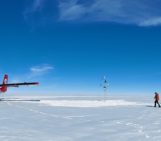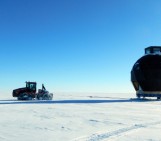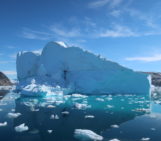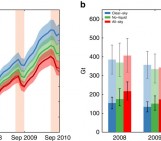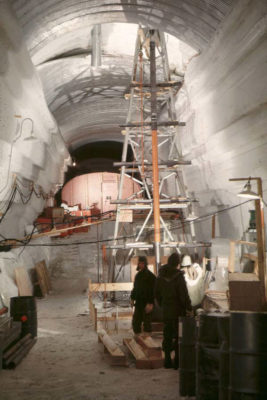
A Cold War nuclear-powered military base inside the Greenland Ice Sheet sounds like science fiction, but the science that came out of this U.S. army installation was anything but fiction. In last week’s EGU CR blog post, Paul Bierman and Amanda Schmidt discussed the advances made by the U.S. military in operating across the Greenland Ice Sheet that culminated in the establishment of Camp Century in the early 1960s, where the first deep ice core was obtained. In this post, I will detail the lasting scientific legacy of the Camp Century ice core, from its initial groundbreaking research in the 1960s to our on-going analysis of the long-lost and recently re-discovered sediment from the bottom of the ice core.
Camp Century: The City Under Ice
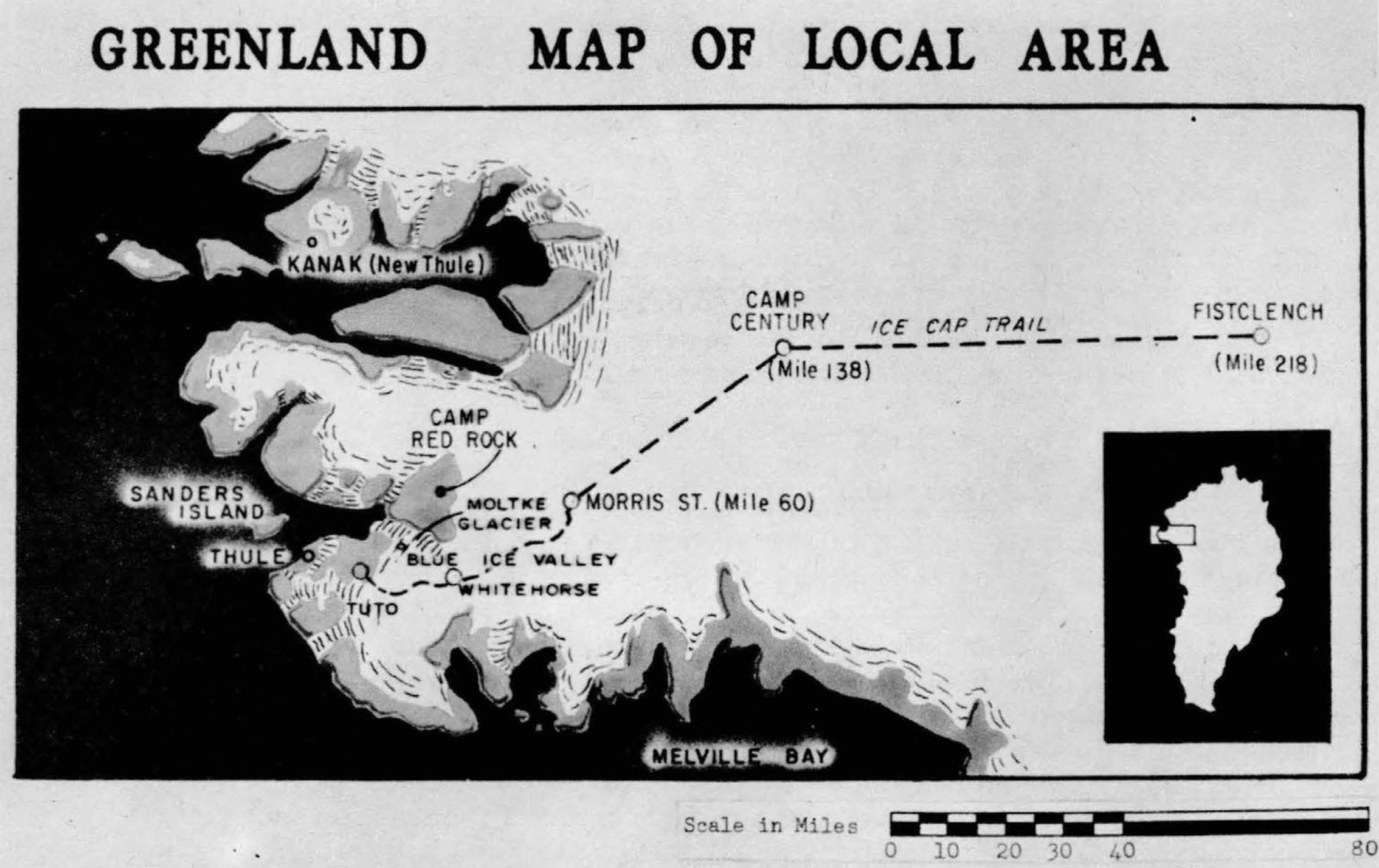
Figure 1: Historic map of northwestern Greenland showing the location of Camp Century (Clark, 1966). [Credit: USACE]
A restored U.S. Army propaganda film describing the construction and operation of Camp Century.
The U.S. Army brought scientists to study the fundamental properties of snow and glacial ice to understand how they could operate in such challenging conditions. Previously, shallow ice cores had been drilled around Greenland but to depths no more than a couple of hundred meters (Langway, 2008). Pioneering ice core scientists Chester C. Langway and B. Lyle Hansen set out on the most ambitious ice core project yet: drilling through the entire thickness of the Greenland Ice Sheet at Camp Century (Fig. 2). Drilling through nearly 1.4 km of ice below Camp Century took two different drills and five years. In the summer of 1966, drilling reached the bed of the ice sheet and recovered a 3.4 metre-long core of subglacial sediment (Fig. 2).
The scientific legacy of the Camp Century ice core
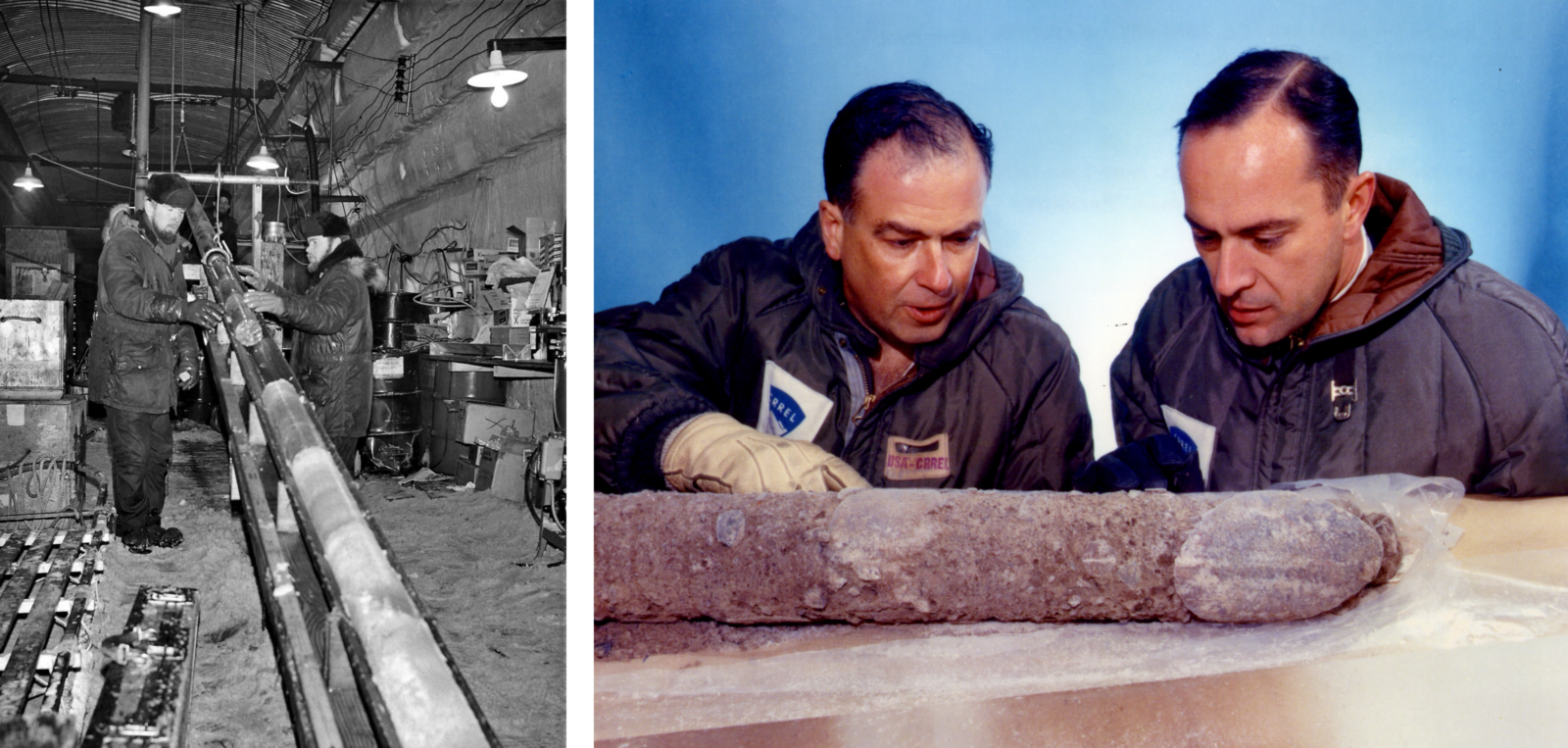
Figure 2: Historic photos of ice coring at Camp Century (a) Recovery of an ice core at Camp Century [Credit: USACE]. (b) B. Lyle Hansen (left) and Chester C. Langway (right) examine the subglacial sediment from the Camp Century ice core [Credit: David Atwood, U.S. Army-ERDC-CRREL, courtesy AIP Emilio Segrè Visual Archives].
However, the basal materials from the ice core – 17 metres of debris-rich basal ice and over 3 metres of subglacial sediment – were not completely studied (Fig. 3). The debris-rich ice was partially analyzed to understand basal ice-sheet processes (Herron and Langway, 1979). Petrological analysis of the subglacial sediment permitted a rare opportunity to explore the geology of Greenland concealed by the ice sheet (Fountain et al., 1981). Abundant microfossils, including freshwater diatoms, in the basal ice and sediment indicated that northwestern Greenland was ice-free at some point in the Pleistocene, but at that time there was no method to radiometrically date the sediment (Harwood, 1986).
In the late 1980s, knowledge from the Camp Century subglacial sediments went dark. The Camp Century basal ice and sediment was sent to the Centre for Ice and Climate at the Niels Bohr Institute at the University of Copenhagen in the early 1990s, where the samples remained frozen and eventually forgotten in the ice core freezer.
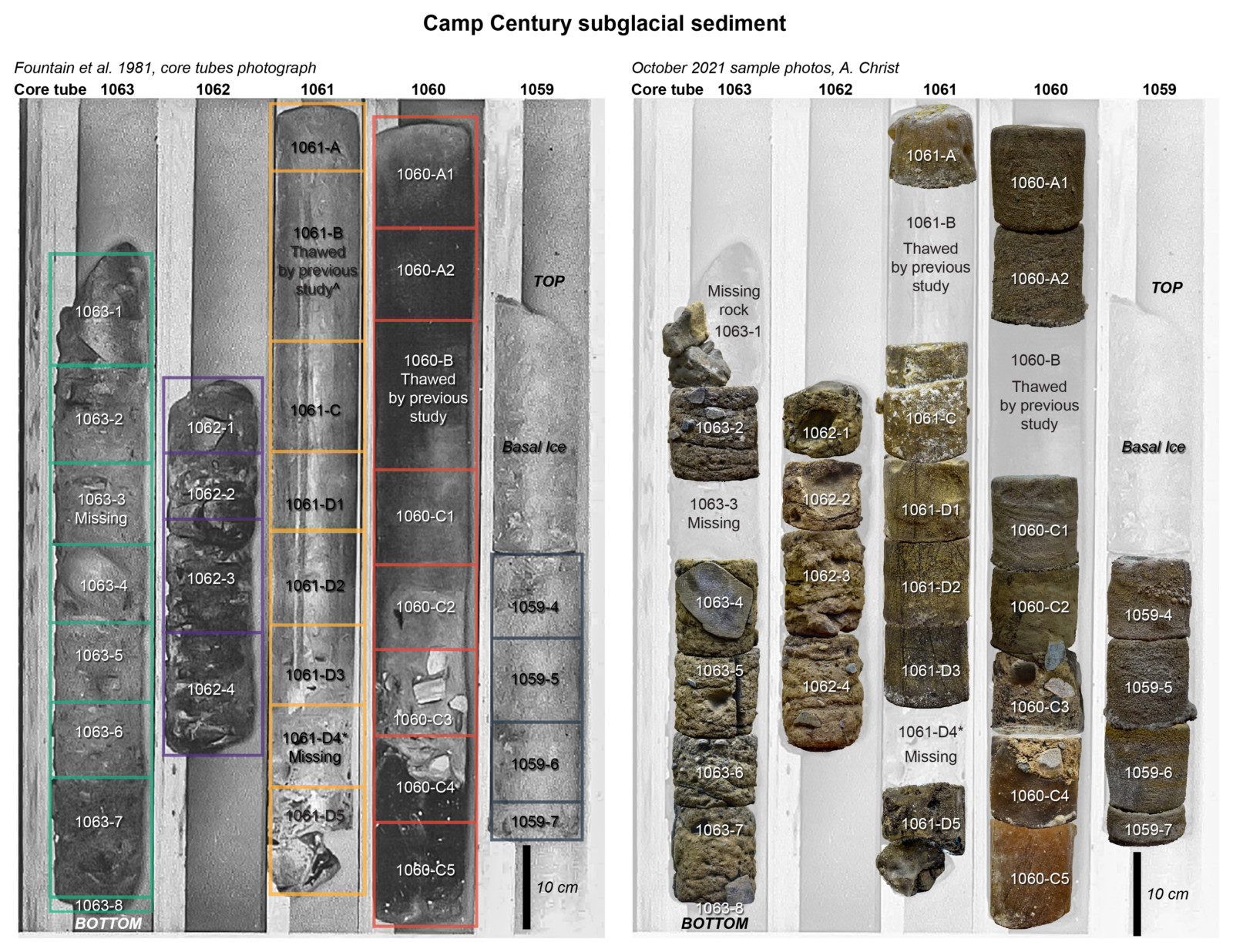
Figure 3: Left: Original photo of the five core tubes of Camp Century subglacial sediment. (Figure adapted from Fountain et al., 1981). Right: New photos of the Camp Century subglacial sediment segments. Incredibly, only a few segments have been misplaced or melted since they were collected in 1966 [Credit: Andrew Christ].
The re-discovery of the basal materials from Camp Century
In 2017, the samples were miraculously re-discovered during an inventory of thousands of ice core boxes. A team of scientists were then invited to apply modern analyses to these long-lost and unique samples. Experimental work started in 2019, when two samples from the core were cut in Copenhagen and sent frozen to Vermont: one from the upper-most and another from the lower-most sections of the Camp Century sediment.
We had just started when something changed our plans. As we sieved the sediment into different grain sizes for analyses, we noticed little black specks floating in the rinse water. As I looked at them under a microscope, I exclaimed something similar to “Holy Schist!”. To our surprise, the sediment was filled with delicate twigs, leaf tips, and woody material (Fig. 4). You can imagine our excitement in finding something like that in a sediment that remained covered by more than 1 km of ice for an incommensurable time!
The scientific importance of that finding was crystal-clear: the presence of plant fossils meant that this sector of northwestern Greenland was ice-free and vegetated in the past. But when was the ice gone and what ecosystem emerged?

Figure 4: Left: Leah Williamson (left) and Andrew Christ (right) excitedly picking fossil twigs from the Camp Century sediment. Right: microscope photos of some of the moss leaf tips, twigs, and stems found in the sediment [Credit: Paul Bierman, Andrew Christ, & Dorothy Peteet].
The fossil ecosystem under ice
We worked with several Arctic plant specialists, who identified a variety of mosses, sedges, willow, shrubs, and other tundra plants common in the Arctic today. These suggest the past presence of vegetation that is found in ice-free areas elsewhere in Greenland today.
But when was the sediment last exposed and then buried below the ice sheet? To find out, we extracted cosmogenic nuclides, which form in near surface materials during exposure to cosmic rays, in both samples to calculate how long sediment has been buried. We determined that the upper sediment must have been exposed, meaning the ice sheet was absent, within the last million years. The lower-most sediment is much older, possibly buried since 3 million years ago.
So, the northwestern Greenland Ice Sheet had retreated within the last million years. Why does this matter? Similar cosmogenic nuclide analyses of subglacial bedrock from the GISP2 ice core in central Greenland found the same result (Schaefer et al., 2016). It appears that much of the ice sheet has melted at least once within the last million years, but we still do not know the precise timing and extent of those past ice sheet retreats. Determining this information is vital for understanding how the ice sheet will respond to anthropogenic climate warming and its potential contribution to sea-level rise.
The Camp Century subglacial sediment provides a time capsule of periods when the Greenland Ice Sheet was smaller and tundra emerged at multi-million-year timescales, which is a rare opportunity given that continuous paleoclimate records from other Greenland ice cores only extend to 130,000 years ago. We published the initial results from our pilot study in PNAS last year. Spurred by our early research on the core, our American and European team was awarded a National Science Foundation grant to analyze the full archive of the Camp Century subglacial sediment.
Old samples, new science
Last fall, I traveled to Copenhagen University’s freezer facility to cut the remaining sediment archive from Camp Century. Walking into the freezer, I felt extremely privileged to not only hold these rare samples from beneath the ice sheet, but then to be one of the few people to ever cut them open and look inside (Fig. 5).
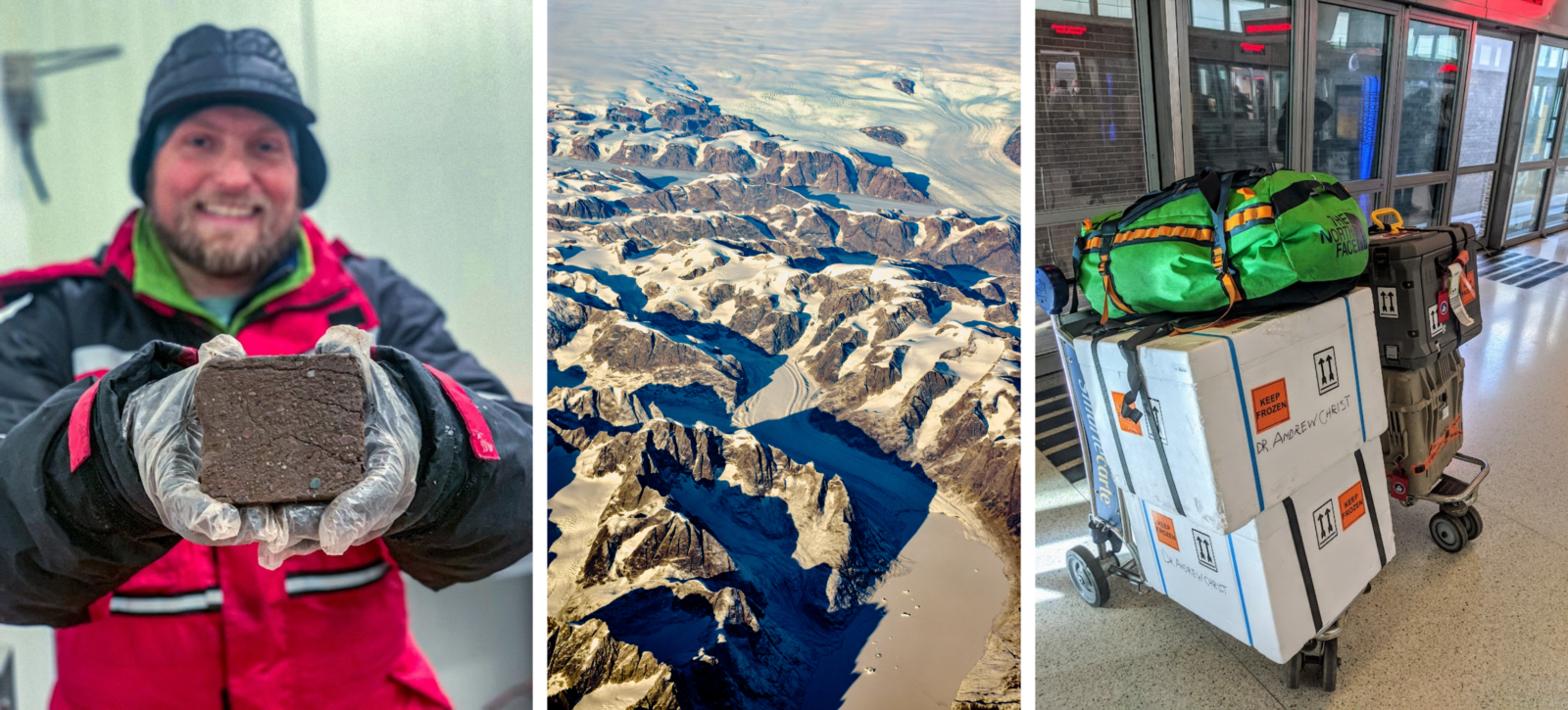
Figure 5: Left: Andrew Christ holds a cut segment of Camp Century subglacial sediment that may be as much as 3 million years old. Center: Fjords of southern Greenland seen on the flight back to the U.S. Right: Navigating Newark Airport with a lot of luggage and samples. [Credit: Kathy Kasic, Andrew Christ]
I embarked on a rather stressful flight bringing several coolers of frozen, priceless samples from Copenhagen back to Vermont. As we flew over the southern tip of Greenland, the irony was not lost on me that there were samples from Greenland in the cargo hold. Stay tuned because soon we will start the analyses and I am sure incredible stories will come out from this priceless time capsule!
Further reading
- Christ et al. (2021) A multi-million-year-old record of Greenland vegetation and glacial history preserved in sediment beneath 1.4 km of ice at Camp Century. Proc. Natl. Acad. Sci. 118, e2021442118, DOI: 10.1073/pnas.2021442118.
- Clark (1966) Camp Century Evolution of Concept and History of Design Construction and Performance. Cold Regions Research Laboratory, Technical Report 174, 1966.
- Fountain et al. (1981) Evidence of the bedrock beneath the Greenland ice sheet near Camp Century, Greenland. J. Glaciol. 27:193–197, DOI: 10.1017/S0022143000011370.
- Harwood (1986) Do Diatoms beneath the Greenland Ice Sheet Indicate Interglacials Warmer than Present? Arctic 39:304–308.
- Herron & Langway (1979) The debris-laden ice at the bottom of the Greenland Ice Sheet. J. Glaciol. 23:193–207, DOI: 10.3189/S002214300002983X.
- Langway (2008) The History of Early Polar Ice Cores. ERDC/CRREL TR-08-1.
- Schaefer et al. (2016) Greenland was nearly ice-free for extended periods during the Pleistocene. Nature 540:252–255, DOI: 10.1038/nature20146.
- Ueda & Garfield (1968) Drilling through the Greenland Ice Sheet. Cold Regions Research Laboratory, Special Report 126.
Edited By Jenny Arthur and Giovanni Baccolo
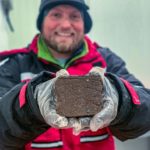 Andrew Christ is a Gund Postdoctoral Fellow in the Rubenstein School of Environment and Natural Resources at the University of Vermont. He is a glacial geomorphologist who uses a variety of field and laboratory techniques, chiefly cosmogenic nuclides, to understand glacial processes and polar paleoclimate. He is working in an international team of researchers to learn more about the basal sediment from the Camp Century ice core. Follow the project on Instagram (@campcentury.fossilsunderice) and Andrew on Twitter (@drewchrist_geo) or contact him via email (Andrew.Christ@uvm.edu).
Andrew Christ is a Gund Postdoctoral Fellow in the Rubenstein School of Environment and Natural Resources at the University of Vermont. He is a glacial geomorphologist who uses a variety of field and laboratory techniques, chiefly cosmogenic nuclides, to understand glacial processes and polar paleoclimate. He is working in an international team of researchers to learn more about the basal sediment from the Camp Century ice core. Follow the project on Instagram (@campcentury.fossilsunderice) and Andrew on Twitter (@drewchrist_geo) or contact him via email (Andrew.Christ@uvm.edu).

